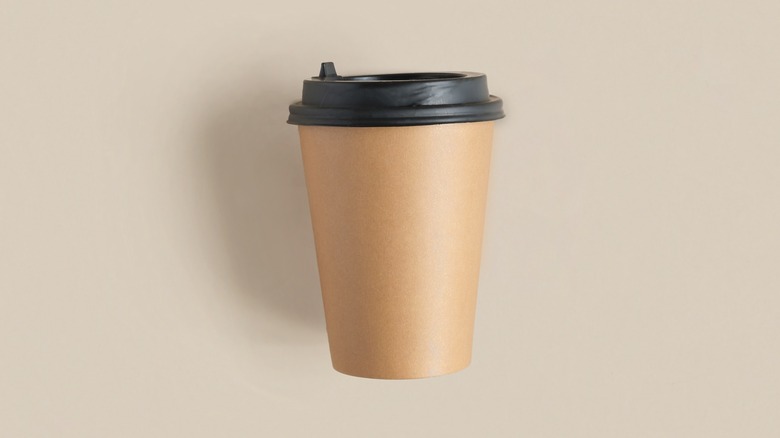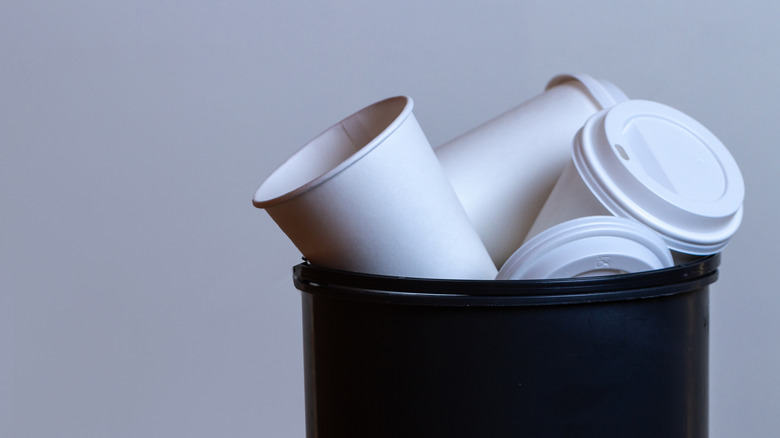Why Paper Coffee Cups Aren't Actually Plastic-Free
Coffee is one of the most popular drinks in the world. According to the International Coffee Association, we drink around 600 billion cups of coffee a year. That's a lot of cups of coffee, which are increasing being served in single-use paper cups, as anyone who gets their coffee to go at Starbucks or their local coffee shop is familiar with. Well, you may want to rethink that habit of consuming your coffee in a paper cup. Turns out, those paper cups aren't entirely paper after all.
According to Plastics Today, most disposable paper cups are made of around 90 to 95% paper, while an additional 5% is made up of a thin plastic coating of polyethelene, a petroleum-based product. The plastic polyethelene coating is what makes the paper cup waterproof and able to hold liquids in the first place. As chemical producer BASF explains, the plastic liner acts as a barrier to liquids, retains heat, and allows paper cups to maintain its shape. In other words, that plastic coating is also essential for the paper cup to function as a cup and to hold hot liquids. Unfortunately, that plastic coating is also what makes these paper cups problematic.
The plastic in paper cups can be harmful to the environment and your health
That plastic coating, when exposed to hot liquids, starts to break down, and releases trillions of nanoparticles of microplastics per liter, according to a recent study published in the Environmental Science & Technology Journal. Another study published in the Journal of Hazardous Materials found that ions and heavy metals were also being released, in addition to the microplastics.
There are already concerns that microplastics are harming the environment. However, some scientists are starting to raise concerns about the potential human health hazards of ingesting microplastics, including that the microplastics are small enough to enter the bloodstream and accumulate in our tissues and organs. Exposure to plastics could also expose us to harmful chemicals that have been linked to various health problems, warns the Consumer Reports in The Washington Post.
One solution is to make and enjoy your coffee at home, or to bring your own reusable travel mug when you get your coffee at a coffee shop. If you're not in a hurry, get your coffee in a ceramic mug instead. That way, you can truly savor the flavor of your coffee, without having to worry that you're getting an extra dose of microplastics on the side.

